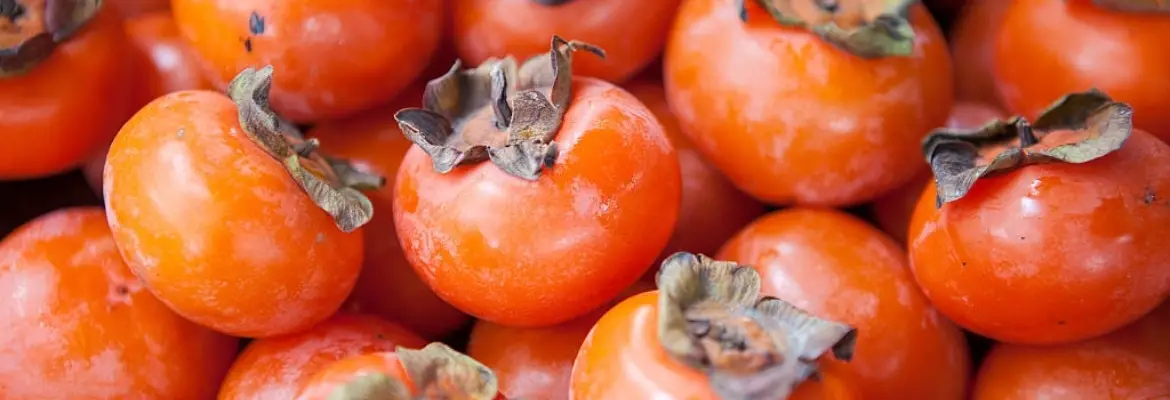Persimmon is a fruit native to china but now grown in many parts of the world commercially. Hachiya and Fuyu variety being the most prominent variety of persimmon in circulation. Ir grows best in subtropical climates.
Eaten as a dessert, persimmon is most flavorful in its softened state. A ripe persimmon somewhat resembles a tomato and is orangish yellow or red in color. A ripe persimmon has a sweet honey like taste.
Average diameter of persimmon fruit can range from 1.5 – 3 inches (4 – 7.5 cm). Average weight of a persimmon fruit is about 150 grams (0.33 pounds or 5.3 ounces).

Scientific name of Persimmon
Diospyros Kaki
Other names of Persimmon
- Sharon Fruit
- Kaki
- Japanese Persimmon
Calories by source in Persimmon
- Calories by carbohydrate in Persimmon = 94%
- Calories by fat in Persimmon = 2%
- Calories by protein in Persimmon = 4%
Fats and Fatty Acid profile of Persimmon
- Polyunsaturated fat (PUFA) in Persimmon = 43%
- Saturated fat (SFA) in Persimmon = 20%
- Monounsaturated fat (MUFA) in Persimmon = 37%
Nutrition facts of Persimmon
*Serving size = 100 grams = 3.55 Ounces = 1/2 cup
*DV= % Daily Value (%DV indicates how much nutrients contribute to a person’s daily diet from a serving of a food. DV assists you in determining whether or not a serving of food is high or low in a particular nutrient.)
| Nutrient | Amount | Unit | DV |
|---|---|---|---|
| Calories | 70 | KCAL | |
| Fat | 0.19 | GRAM | 0% |
| Protein | 0.58 | GRAM | 1% |
| Carbohydrate | 18.59 | GRAM | 7% |
Detailed vitamin profile of Persimmon, vitamin A, vitamin B12, vitamin B6, vitamin C, vitamin D, Folate, Niacin, Thiamin, and Riboflavin is shown in the chart.
Detailed mineral profile of Persimmon, Sodium(Na), Calcium(Ca), Copper(Cu), Iron(Fe), Magnesium(Mg), Selenium(Se), Phosphorus(P), Potassium(K) and Zinc(Zn) is shown the chart.
Check freshness in Persimmon
- Fresh persimmons have bright colored, glossy skin with deep red undertone
- Choose persimmons with a smooth skin and well rounded shape
- Avoid persimmons with light brown blemishes, cracks and bruises
- good quality persimmons will have their leaves still attached to their stem
- Unripe persimmon will have yellow colored patches
- Wrinkled skinned persimmons are not fresh
- Bad persimmons have a pungent smell and will taste bitter
- Fresh persimmons have a sweet smell
- Ripe persimmons are very soft and should be handled gently
Availability of Persimmon
- USA – Persimmon season ranges from October – January
- India – Persimmon season ranges from September to December
- China – Persimmon season ranges from October – November
- Korea – Persimmon season ranges from October – November
- Europe – Persimmon season ranges from October – December
How to store Persimmon
- Ripe persimmons can be stored at room temperature for 2 days
- Ripe persimmons can be stored in refrigerator for 4-5 days
- Keep away from direct sunlight and heat
- Unripe persimmons can be stored at room temperature for 5-6 days
- Unripe persimmons can be stored in refrigerator for 3-4 weeks
- Persimmons can be frozen as well. Frozen persimmon can last up-to 6 months
Complete nutrition facts of Persimmon
Click on the link HERE to download high quality, high resolution and print ready PDF version of the Persimmon nutrition chart/infographic.


